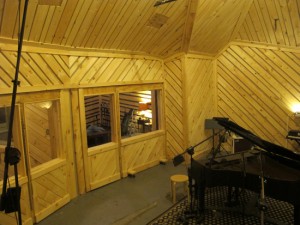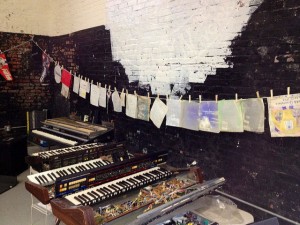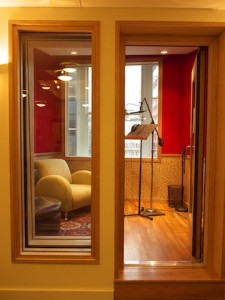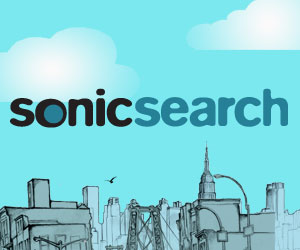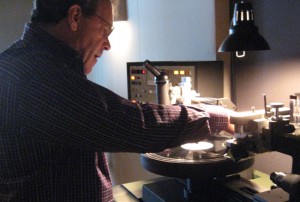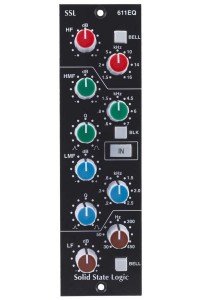The SonicScoop Year in Review: Top Audio & Music Business Developments of 2012
Why do a year-end wrap-up? And why make a big deal about the New Year at all? After all, no matter what it says on the calendar, every day that you wake up is a brand new day.
But there’s something about our species that likes to keep track of what goes on, and marking one full rotation of the Earth around the Sun is a big event to stay on top of. A lot can go on inside that timeframe — and for all of us in the world of audio in 2012, a lot certainly did.
At SonicScoop, taking stock of highlights and lowlights was particularly eye-opening this year: It seems like there was a decade’s worth of action jammed into the last 365 days. Whether the primary viewpoint is tracking, mixing, audio post, crafting new technology or leading a retro charge, 2012 left its mark.
From NYC to LA, and everywhere in between, one of the top barometers for audio biz health is studio comings and goings. On that front, the action was nonstop from wire to wire.
We kicked off 2012 by announcing that Producer/engineer/DJ Louis Benedetti had opened the three-room Thompson Studios in a former bank building in SoHo.
The Bunker launched a new and highly ambitious version of itself in Williamsburg.
Studio G opened up a vastly expanded new facility, with a choice of Neve and SSL.
Meanwhile, the Park Slope recording complex Shapeshifter launched in Park Slope.
Degraw Sound arrived in Gowanus.
Elite engineer Cynthia Daniels brought world-class recording to the Hamptons with Monk Music.
DFA Studios, the former private production suite for LCD Soundsystem, went public in the West Village.
SonicScoop walked in on John King taking over the former Skyline Recording Studios, and converting it into the new Chung King.
Sunset Park’s Industry City offered up space and heavy incentives to audio professionals.
Major Jar Music showed us the ways that a Brooklyn multimedia collective can grow.
Staten Island earned major respect via destination facility Nova Studios.
Greenpoint made space for indie-friendly Spacebar Studios.
Seasoned studios like Dubway undertook serious expansion, displaying unshaking confidence in Manhattan.
Kingsize Soundlabs showed the way to stand out in LA.
The DUMBO studio ishlab re-emerged when Daniel Lynas and Frans Mernick equipped it with a Neve 55 console.
Mobile audio had its developments as well. The Sound Shop, with its heavy portfolio including Bonnaroo, moved its operations from North Carolina to NYC. And Remote Recording started driving its “Taxi” small footprint vehicle at the end of the year.
No longer Tainted Blue, the Penthouse of 723 7th Avenue became Terminus.
The relaunches continued apace with Monsterland’s return to Bedford-Stuyvesant/Bushwick.
On October 18th, we reported on the union of studios Translator Audio and the Civil Defense at the South Sound rehearsal/production complex on the Park Slope Gowanus border.
Just three weeks later we related their destructive ordeal as Hurricane Sandy submerged their well-laid plains – and wondered how many more in the tri-state area would have to now engineer a comeback.
Since NYC refuses to stop, NJ’s Kaleidoscope Studios helped the area stay strong with its opening of its Fran Manzella-designed analog/digital room, The Patio.
Then, the console formerly owned by TV on the Radio started powering an upgraded Studio A at Greepoint’s The End.
Manhattan’s studio ranks were swelled by the latest edition of Sweet Sounds, a stylish new two-room facility sporting a Neve 5088…
…Then were thinned again by the loss of a modern classic, as Stratosphere Sound Studios booked its last session.
Mastering, long a model of consistency in the audio world, continued to move patiently apace. Some additional vibrancy revealed itself, however.
The ongoing resurgence of vinyl – a 39% increase in vinyl sales in 2011! – by necessity brought increased business to mastering. We saw the “Vinyl Revival” from Brooklyn Phono to Infrasonic Sound in LA.
One of the industry’s top mastering engineers, Vlado Meller, launched an intensive NYC workshop at Arf! Mastering to share his deep knowledge of the craft.
And audio pros jumped at the chance to have mastering demystified, at a well-attended May event hosted by Flux Studios, Dangerous Music, Manley, Focal Professional, and Alto NYC.
On a sad note, galaxy-class mastering engineer George Marino passed away after decades of finishing hit records for Sterling Sound.
Audio post didn’t play second fiddle. In NYC, the scene that mixers for TV and film occupy saw plenty of movement.
Post boutique Northern Lights conjoined itself with a new sister company, SuperExploder.
Founded by Sound Lounge expats, Heard City opened its forward-thinking, 7,000 sq. ft. facility in the heart of the Flatiron district.
Each and every audio post business in NY got a boost when Governor Cuomo tripled the Empire State Film Post Production Credit.
We thought that Hyperbolic Audio, in its new midtown location, represented evolved thinking for NYC post.
The legendary Sound One was shut down, a victim of its massive Brill Building overhead and a drastically different landscape than the one that had originally launched it in the 1970’s.
But a light shone across the river: We also noted increased audio post activity in Brooklyn. Fall On Your Sword showed how it was already being down in Williamsburg, and Brooklyn Sound Society invested in the future with the purchase of a three-story building in Bedfort Stuyvesant, slated to dedicate 3,600 sq. ft. to film and multimedia audio post.
Meanwhile, original music for picture had no choice but to keep moving forward, even as competition intensified and the fees that composers command seemed even harder for many to maintain.
Shout It Out Loud Music launched a new studio smack in the heart of the Fashion District.
The collective ManhatPro underscored the NYC area’s myriad offerings via an initiative focused on boosting music for film activity locally.
Highly accomplished composers like Peter Fish diversified, becoming more deeply involved in content creation.
Music supervisors at ad agencies like JWT and Saatchi & Saatchi continued to make a big impact on licensing.
The Production Music Association’s NYC meeting in October made the industry’s many challenges perfectly clear.
Ear to Ground Sound, founded by members of Rival Schools, demonstrated the effective indie rock connection to music for media.
Our look at the ongoing expansion of Butter in SoHo showed how smart business could made a difference for original music.
L.A.-based composers like Noah Lifschey proved that solo creators could still capture big campaigns, as he did with the launch of SportsNet.
And the arrival of TuneSpring exemplified that new ideas and workflows are still abounding in the music-for-picture field.
Speaking of new ideas, SonicScoop was just busting with ‘em all year! We didn’t have time to get to everything on our agenda, but we’re psyched about what did surface. Namely…
Our “Power Sessions” video series was a hit, as Chris Lord-Alge shared his deepest, darkest – OK, maybe just the deepest – mixing secrets.
Upping the ante, we introduced SonicSearch in beta – our new site for studio and audio professional discovery.
Sightings of audio icons were on the rise in 2012.
Mixing materialized via the spiritual wisdom of Bob Power, and the never-ending quest for fresh techniques by Michael Brauer.
A-ha’s Paul Savoy was discovered operating diligently out of SoHo.
Another massive hitmaker, Dave Gahan of Depeche Mode, gave us entre to his personal NYC studio.
Super engineer Kevin Killen held us riveted.
Tony Visconti kept things close to the vest (in a most gentlemanly manner) at Germano Studios.
And the legendary Eddy Offord came out of retirement to produce and mix at Pyramid in the heart of Koreatown.
Of course, the nation’s music business is about more than just moving faders. There was plenty to talk about beyond the floated floors.
The NFL launched its “Business of Music Boot Camp” at NYU.
Indie labels both new, like Brooklyn’s Triple Down Records, and established like the kind-of-legendary Luaka Bop, ensured that all this music being made had a way of getting out there.
Retail expanded in NYC with the arrival of Audio Power Tools, and in LA via Vintage King’s new Sunset Boulevard showroom. GC Pro joined the party California way with their own new recording/listening space.
Audio education continued to be a big business and source of fresh talent, with schools like SAE finding new ways to recognize their alumni’s achievements.
Events like the New Music Seminar made a strong push, and attempted to pave the way for the music industry’s next phase.
Live festivals such as Electric Zoo – and dozens of other crowd-attracting gatherings – bolstered the bottom line of live sound engineers and rental companies throughout the region.
While still working hard to maintain its edge, Avid also continued to make some negative headlines. The industry’s undisputed hardware/software giant laid off another 20% of its staff in July.
TuneCore co-founders Jeff Price and Peter Wells were bounced out of the company they created.
On the other end of the spectrum, hope sprang eternal for startups launching in NYC, or opening up satellite offices here – for evidence see the likes of Splash.fm, Believe Digital, and Team Indie.
SonicScoop raised some serious questions for the AES following the 133rd AES Convention in San Francisco…
…and the AES answered right back.
Superstars and in-the-trenches audio pros alike left us in 2012 as well.
Whitney Houston, whose sessions employed many an engineer and studio passed away in February.
Dance music keyboardist Johann Brunkvist was gone much too soon at age 50.
Beastie Boy Adam Yauch lost his battle with cancer in May.
While the loved and respected NYC producer/engineer Benjy King was laid to rest at the end of September.
And, as noted above, mastering legend George Marino lost his battle with cancer.
Of course, a fair amount of headlines were grasped by the tools we use. Hardware, software, and all things gear had its own breakthroughs and trends.
There was immediate interest in the Universal Audio Apollo audio interface, which featured realtime UAD processing.
The development of AAX plugins for Pro Tools continued to arrive on the market, such as Sonnox’ Oxford EQ and Inflator.
Cloud data storage service Gobbler persisted in its push to assist music producers and engineers, with updates like availability for PC.
Speaking of PC’s, Sound Forge finally became available for the Mac.
You could still see a big console coming out, such as SSL’s beautiful-to-behold Duality Pro-Station.
Innovative products to bridge the gap between analog and digital are always welcome, such as the new Latency Killer from Lavry Engineering.
Plugins with the flavor of sought-after classics continued to come out, like the Sound Toys Radiator, and REDD console plugins from WAVES.
People went bonkers over the prospect of Slate Digital’s upcoming Raven control surface/interface.
Empirical Labs, maker of the essential Distressor compressor, told SonicScoop that a strong move to digital was imminent for the company.
500 modules came on like a freight train! Radial Engineering seemed to release new units non-stop in the 4th quarter. Meanwhile, Aphex, Moog, SSL, AWTAC (NYC), and JDK were just a few of the companies bringing new 500 module concepts to the marketplace.
Thunderbolt-enabled products began to emerge, for those who could take advantage of them. Avid and Universal Audio both got into the game.
Naturally, iPad functionality just got sleeker and more powerful. The Auria DAW for iPad made plenty of waves. Focusrite launched the iTrack solo 2-channel interface for iPad and other iOS devices, and Mackie introduced the DL-1608 digital live sound mixer.
Staying on the live tip, gear got smarter in the form of systems like the Line 6 StageSource L3M digitally networkable live PA, or plugins designed with live workflow in mind. Cerwin-Vega made some noise about its new P-Series of portable, powered loudspeakers with coming-out parties on both coasts.
For many whose businesses were hit square in the jaw or indirectly affected, the trauma of Hurricane Sandy leaves a lingering effect going into the New Year. But it was the way that audio pros responded that shows the resilient stuff that so many of us are made of.
Sound Toys quickly raised $38,000+ for Team Rubicon’s Super Storm Sandy relief effort in November.
A.L.L. Digital Mastering shared its story of resurrection after Sandy leveled its Breezy Point, Queens studio.
And Mason Jar Music transitioned us all out of 2012 on a high note, recording 15 songs in 14 days – by folk luminaries including Roseanne Cash and Bela Fleck – for its Sandy benefit album The Storm is Passing Over. Yes, it is – and let’s look forward to a sweet-sounding 2013.
— David Weiss
Please note: When you buy products through links on this page, we may earn an affiliate commission.







